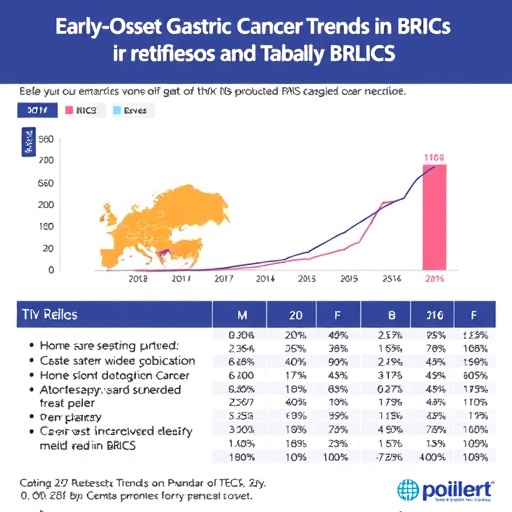Boston, MA — Prostate cancer (PC) is the second leading cause of male cancer death in the United States with an estimated 26,000 deaths in 2016. Two-thirds of all PC deaths observed in the US are men with localized disease who developed metastasis. Several markers for dying from prostate cancer exist, but whether these are markers for telling who is likely to die early from any cause, and how their performance compares, is unknown. Identifying such a marker is important because we can then identify which men may benefit from new, more aggressive treatments for prostate cancer.
Researchers at Brigham and Women's Hospital found that a prostate specific antigen (PSA) nadir (the lowest level a PSA drops after treatment) greater than 0.5 ng/mL following radiation and androgen deprivation therapy (anti-hormone therapy), appears to identify men prior to PSA failure who are at high-risk for dying early as a result of treatment failure for their prostate cancer. The findings are published in the January 12 edition of JAMA Oncology.
"By identifying and enrolling these men in clinical trials immediately, the hope is to take a prostate cancer that appears to be incurable and make it curable" stated Trevor J. Royce, MD, senior resident in the department of Radiation Oncology at BWH, and corresponding author of the study.
Using data from a randomized trial of 206 men treated with either radiation or, radiation and six months of hormonal therapy, researchers compared early markers of prostate cancer death to identify men at risk of dying early.
"This study's results can have practice changing implications on how future prostate cancer trials are designed in terms of identifying the men for these studies who are at high risk for early death due to ineffective initial treatment for their prostate cancer," stated Anthony Victor D'Amico, MD, PhD, chief, Genitourinary Radiation Oncology, Brigham and Women's Hospital and senior author of the study.
###
The results of this study have been submitted as an abstract to the American Society of Clinical Oncology's 2017 Genitourinary Cancers Symposium (February 16-18, 2017 in Orlando, Florida).
Paper cited: Royce, MD, MS et al. "A Comparison of Surrogate Endpoints for All Cause Mortality in Men with Localized Unfavorable-Risk Prostate Cancer," JAMA Oncology DOI: 10.1001/jamaoncol.2016.5983
The authors have no funding or financial support to disclose.
Brigham and Women's Hospital (BWH) is a 793-bed nonprofit teaching affiliate of Harvard Medical School and a founding member of Partners HealthCare. BWH has more than 4.2 million annual patient visits and nearly 46,000 inpatient stays, is the largest birthing center in Massachusetts and employs nearly 16,000 people. The Brigham's medical preeminence dates back to 1832, and today that rich history in clinical care is coupled with its national leadership in patient care, quality improvement and patient safety initiatives, and its dedication to research, innovation, community engagement and educating and training the next generation of health care professionals. Through investigation and discovery conducted at its Brigham Research Institute (BRI), BWH is an international leader in basic, clinical and translational research on human diseases, more than 3,000 researchers, including physician-investigators and renowned biomedical scientists and faculty supported by nearly $666 million in funding. For the last 25 years, BWH ranked second in research funding from the National Institutes of Health (NIH) among independent hospitals. BWH is also home to major landmark epidemiologic population studies, including the Nurses' and Physicians' Health Studies and the Women's Health Initiative as well as the TIMI Study Group, one of the premier cardiovascular clinical trials groups. For more information, resources and to follow us on social media, please visit BWH's online newsroom.
Media Contact
Elaine St. Peter
[email protected]
617-525-6375
@BrighamWomens
http://www.brighamandwomens.org
############
Story Source: Materials provided by Scienmag




